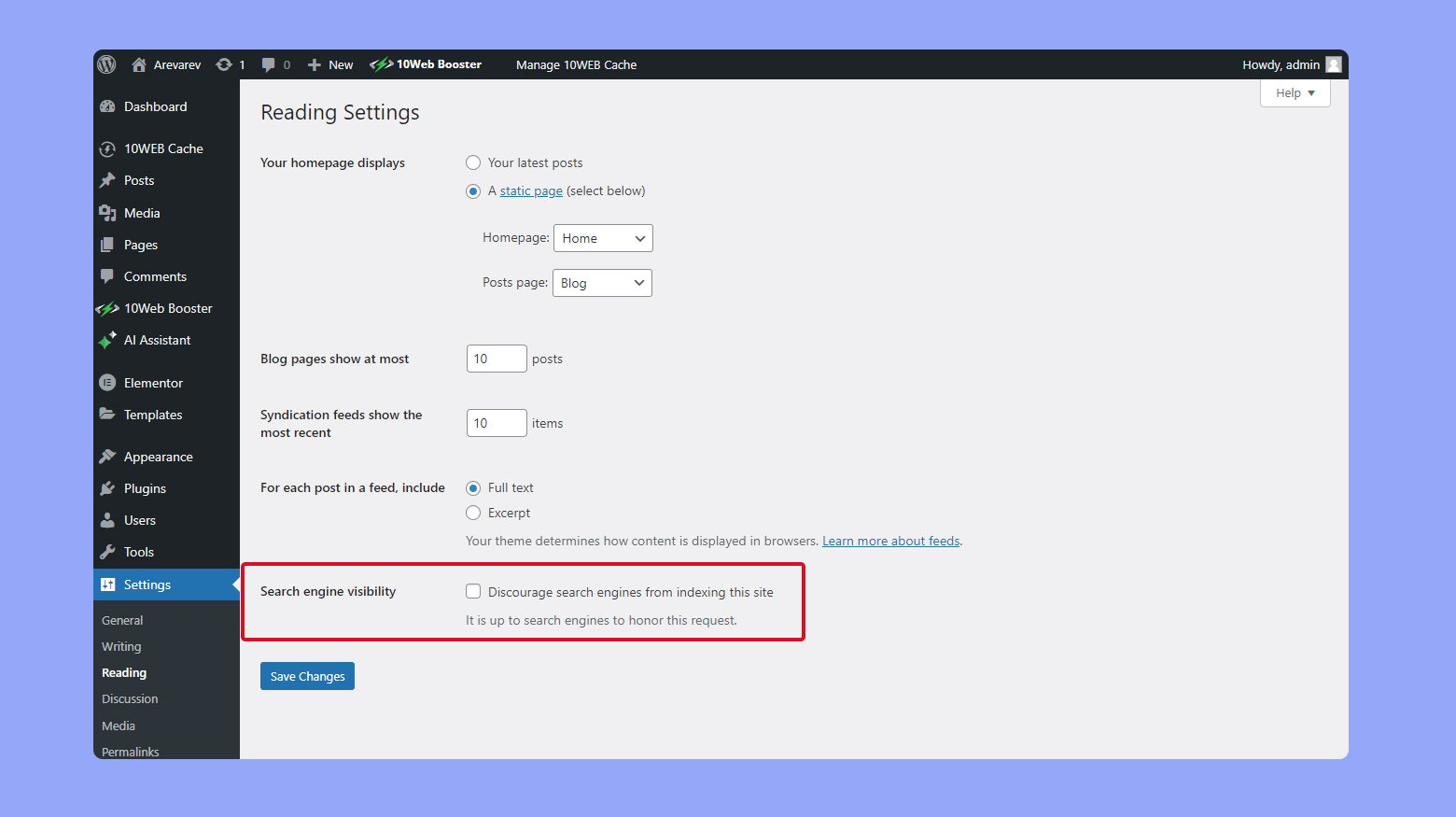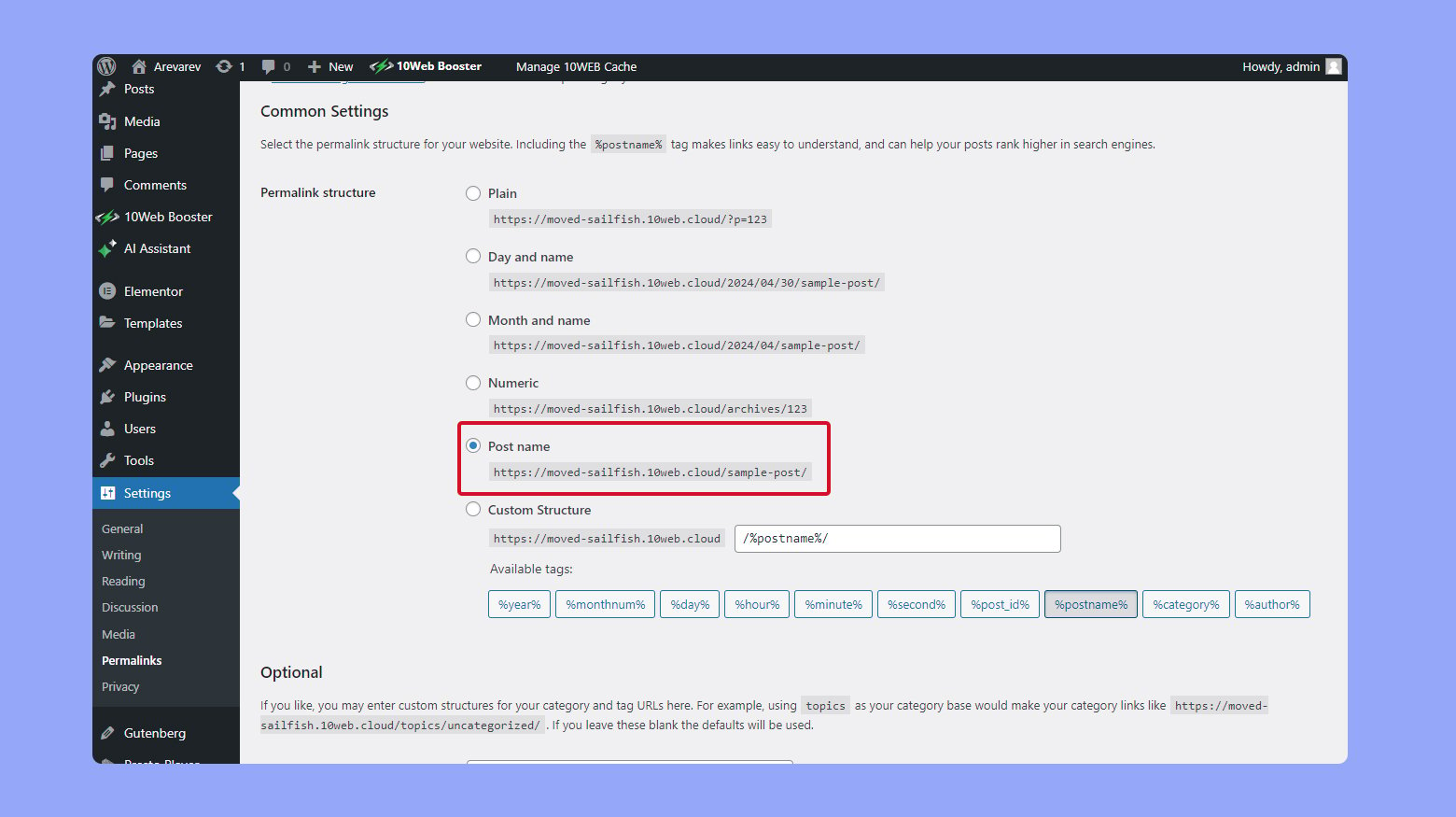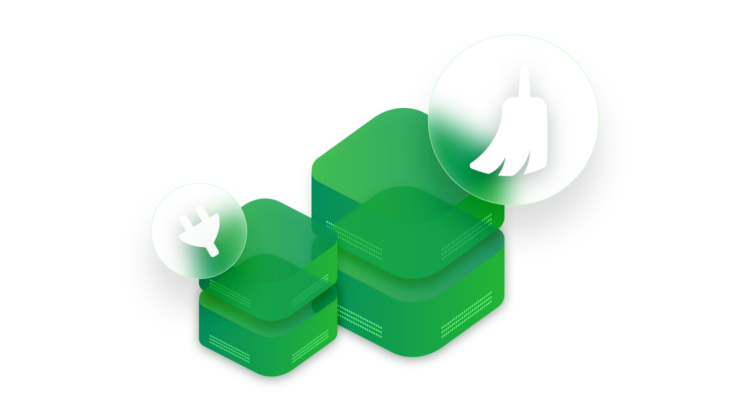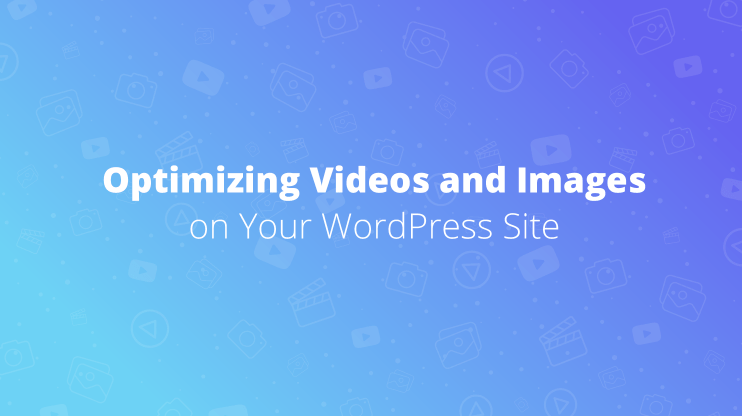Improving SEO on WordPress involves understanding the core elements that make your website search engine friendly. WordPress, a popular content management system, offers excellent flexibility through its themes and plugins to optimize your site for better rankings. This article covers essential SEO fundamentals from setting visibility settings and permalinks to using powerful SEO plugins like Yoast or Rank Math. By improving site structure and content optimization, you can enhance user experience and meet search engine criteria effectively, paving the way for increased traffic and potential conversions.
FAQ
How do I improve my WordPress SEO?
Install a reputable SEO plugin like Yoast SEO or All in One SEO Pack. Regularly update your content for relevance, focus on keyword optimization, ensure your website is mobile-friendly, and use clean, SEO-friendly URLs.
How do I make my WordPress site SEO friendly?
Use an SEO-friendly theme that is fast and responsive. Optimize your content with targeted keywords, add meta tags using SEO plugins, ensure images have alt text, and create an XML sitemap to help search engines better index your site.
How do I increase my website SEO?
Produce high-quality, engaging content that includes relevant keywords naturally. Build backlinks from reputable sites, improve site speed, optimize images, and ensure your site is mobile-friendly. Regularly update existing content and use social media to drive traffic.
What is SEO optimization in WordPress?
SEO optimization in WordPress involves configuring your site and content to improve visibility and rankings in search engine results. This includes using SEO plugins, optimizing titles and descriptions, ensuring fast loading times, and structuring URLs and content for easy indexing by search engines.
Getting started with WordPress SEO
Before diving into the nitty-gritty of SEO on WordPress, it’s essential to grasp the basics and set up your website for SEO success. WordPress is a powerful platform that, when optimized correctly, can significantly increase your site’s visibility in search engine results.
Understanding SEO and its importance
SEO, or search engine optimization, is the process of refining your website to improve its visibility when people search for products or services related to your business in Google, Bing, and other search engines. The better visibility your pages have in search results, the more likely you are to garner attention and attract prospective and existing customers to your business.
- Why SEO is crucial: Higher rankings can lead to more traffic and potentially more conversions.
- Search engines: Your aim is to satisfy search engines’ algorithms for higher rankings.
An overview of WordPress as a content management system
WordPress is a content management system (CMS) that facilitates creating, editing, and managing your website’s content without needing extensive coding knowledge. It’s one of the most popular systems due to its ease of use and flexibility. WordPress powers a significant portion of the web, indicating trust and reliability. With themes and plugins, you have the ability to customize your site to suit your SEO needs.
Simplify WordPress with 10Web
Skip and automate manual work with 10Web Managed WordPress Hosting. Optimize your WordPress website effortlessly.
How to improve SEO on WordPress
To get started with SEO on WordPress, you need to:
- Check visibility settings: In your WordPress dashboard, ensure that Search Engine Visibility under Settings > Reading is unchecked. This makes sure your website is visible to search engines.

- Permalinks: Set your permalinks to include the post name for a clean and SEO-friendly URL structure. Go to Settings > Permalinks and select Post name.

- SEO plugins: Install a reputable SEO plugin like Yoast SEO or All In One SEO to help optimize your site. You can find these in the Plugins section.
- Content Optimization: Begin creating quality content with relevant keywords that help search engines understand and rank your site.
- Initial settings: A few critical settings such as Title Templates and meta descriptions can be defined under the SEO plugin’s settings.
- XML Sitemap: Generate an XML sitemap using your SEO plugin to help Google index your site more efficiently.
- robots.txt: Ensure your robots.txt file is optimized to guide search engine crawlers.
Optimizing site structure and navigation
To enhance your WordPress website’s SEO, you need to ensure your site’s structure is clear and logical. This not only helps search engines crawl and index your content effectively, but also improves user experience, which is a vital aspect of SEO.
Creating a logical hierarchy
Your WordPress site should have a well-defined hierarchy that makes sense to both users and search engines. Begin by structuring your main pages as a top tier—often your services or product categories. Under each main page, add subpages as relevant. For example:
- Home
- About Us
- Services
- Service 1
- Service 2
- Products
- Product A
- Product B
- Contact
Use menus in WordPress to reflect this hierarchy, offering clear navigation. Remember to interlink your pages appropriately, so that users can naturally flow from one piece of content to another.
Implementing effective permalink structure
Permalinks are the URLs for your pages and posts on your website. They should be SEO-friendly and readable. In your WordPress dashboard, go to Settings and then select Permalinks. Choose a structure that includes the post name, which will usually be the title of your page or post. Avoid using numbers or date-based structures unless they are critical for your website.
Managing categories and tags
Categories and tags help organize your content and make it discoverable. Categories should represent broad groupings of your posts, while tags are more specific and describe the particulars of each post.
To manage categories and tags, click on Posts then select either Categories or Tags to add, edit, or delete them. Keep your categories and tags consistent and strategic for the sake of visibility, as a cluttered or confusing category and tag structure can harm your SEO efforts.
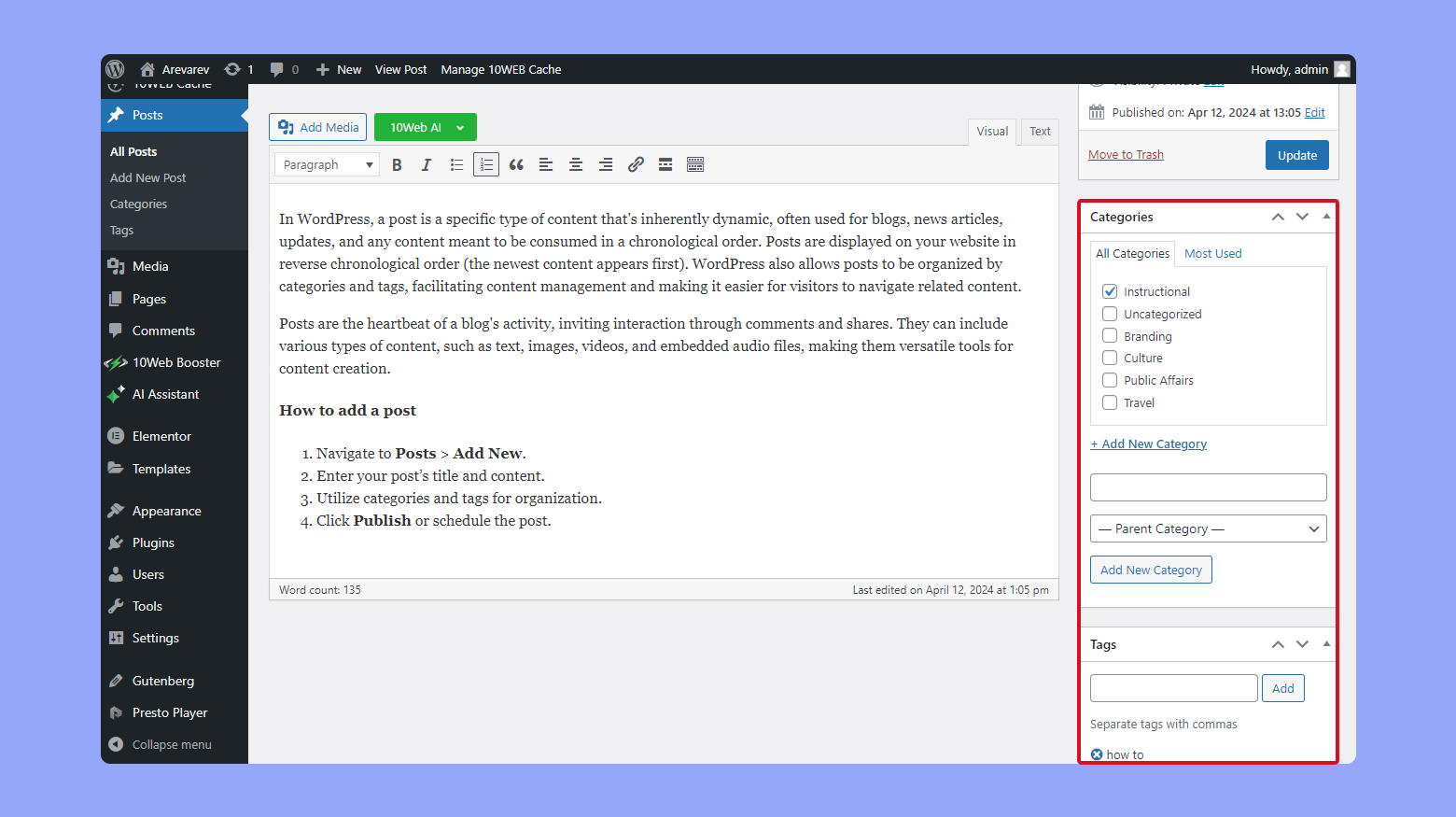
Selecting the right themes and plugins
When setting up your WordPress site, choosing SEO-friendly themes and the right SEO plugins can significantly impact your site’s search engine performance.
Choosing SEO-friendly themes
Your theme sets the stage for your WordPress site, so it’s crucial to pick one that supports your SEO efforts. Look for themes that are labeled as SEO-friendly. These themes are typically designed to ensure fast loading times and mobile responsiveness—two factors search engines highly value. Remember to verify that the theme follows the latest web standards and supports schema markup which can enhance your site’s readability by search engines.
Simplify WordPress with 10Web
Skip and automate manual work with 10Web Managed WordPress Hosting. Optimize your WordPress website effortlessly.
Essential SEO plugins for WordPress
SEO plugins add tools and functionalities to your WordPress site to optimize it for search engines. Here’s a list of features to consider when evaluating SEO plugins:
- Automatic generation of XML sitemaps
- SEO analysis for optimizing content
- Built-in tools for editing .htaccess and robots.txt
- Social media integration for enhanced content sharing
Plugins like Yoast SEO and Rank Math are reputable choices that come with these essential SEO features. They both offer a straightforward setup for beginners and advanced controls for experienced users.
Setting up Yoast SEO or Rank Math
Once you’ve chosen your SEO plugin, getting it up and running is your next step.
For Yoast SEO:
- Install the plugin via the Add New button under the Plugins section.
- Activate it and access the configuration wizard from the newly added SEO menu.
- Follow the step-by-step guide to set up basics such as site type, social profiles, and visibility settings.
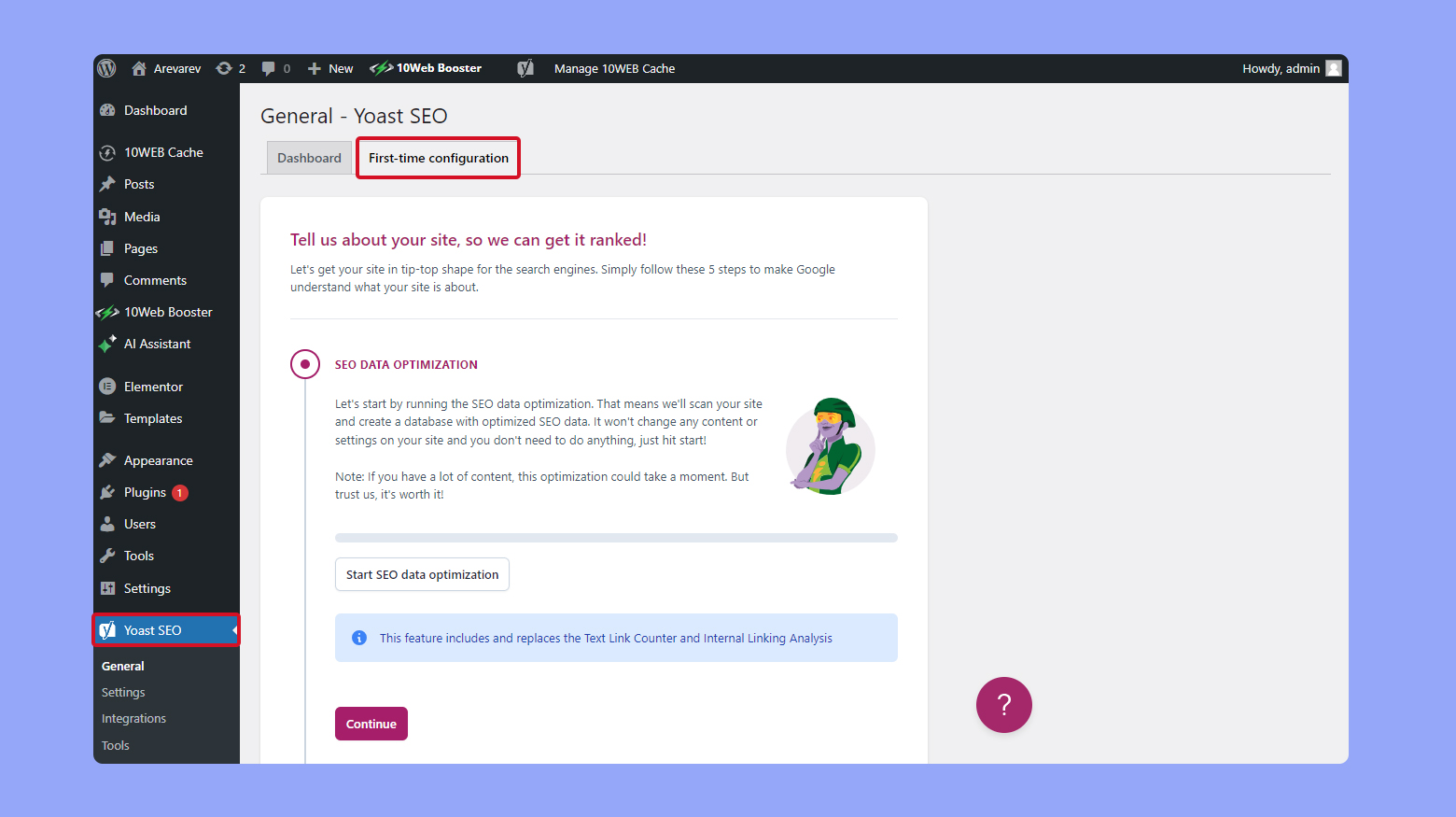
For Rank Math:
- Install and activate the plugin similarly to how you would with Yoast.
- Use the setup wizard accessible from the Rank Math menu and connect your plugin with Google Search Console.
- Configure sitemaps, SEO tweaks, and social media integrations as guided.
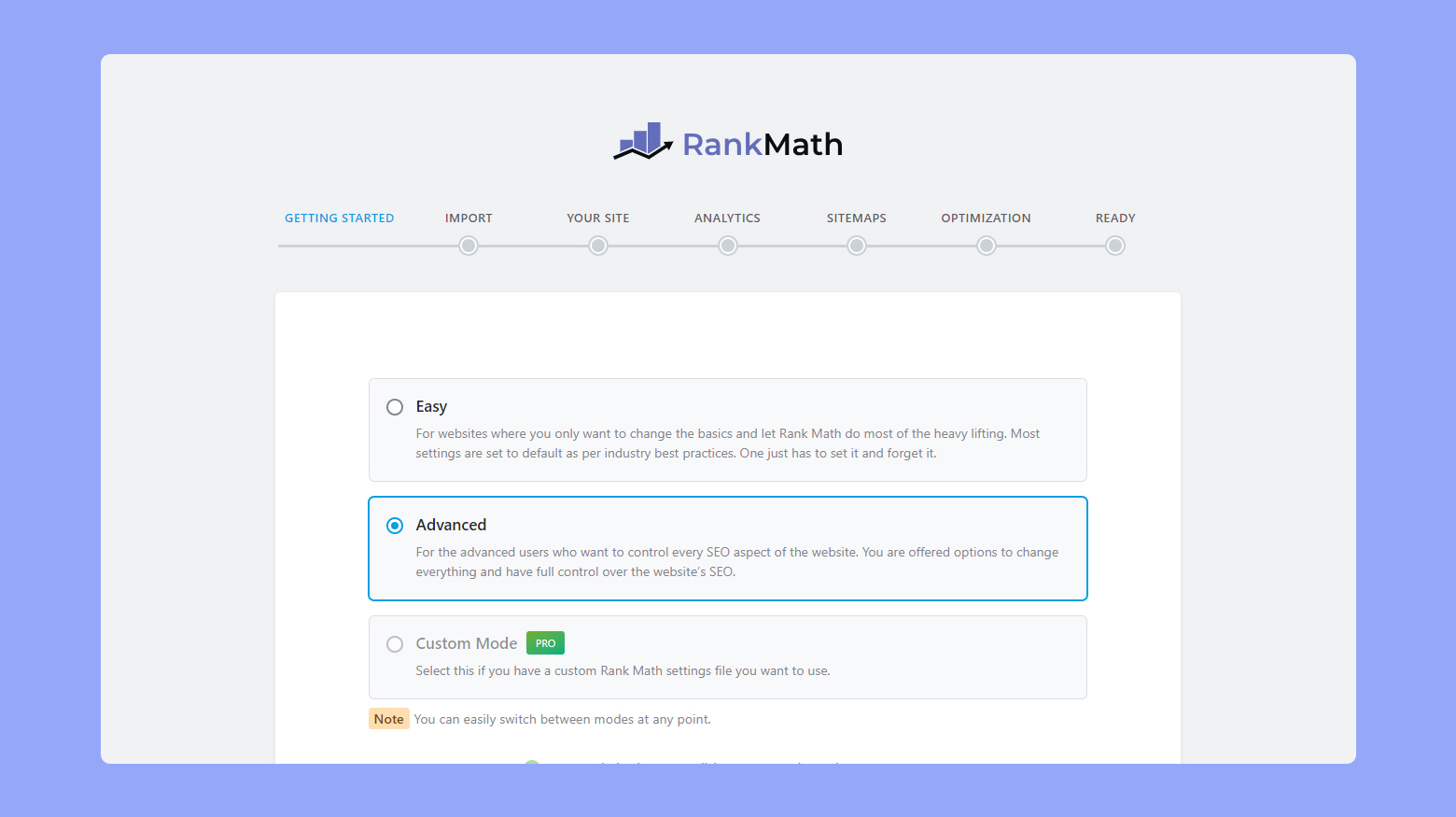
By carefully selecting your themes and plugins, you’re laying a solid foundation for your WordPress site’s SEO success. Remember to keep both your theme and plugins updated to leverage the latest SEO advancements and stay ahead in search engine rankings.
Optimizing your content
To enhance your website’s visibility and search performance, refining your on-page elements is crucial. Here, you’ll learn specific tactics to effectively optimize your content for search engines.
Keyword research best practices
When it comes to keyword research, your aim is to identify terms that your audience is searching for. Start by using tools like Google Keyword Planner or Ahrefs to discover relevant keywords with a good balance of search volume and competition.
Focus on long-tail keywords as they can drive targeted traffic and have less competition. Remember to also consider search intent, ensuring that the keywords you target align with what users are seeking.
Crafting optimized titles and meta descriptions
Your titles and meta descriptions are pivotal to compelling users to click through from search engine results pages. Titles should encapsulate the main point of your content while integrating your primary keyword. Keep them under 60 characters to ensure they display in full on the SERPs. For meta descriptions, which should be no longer than 160 characters, include secondary keywords and a clear call-to-action to entice users to read more.
Optimizing headings and content
Headings are not only critical for readability but also for SEO. Use H1 for your main title and H2, H3, etc., for subsections to provide structure. Include your main and related secondary keywords in the headings where natural.
Within your content, aim for a keyword density that feels natural and provides value; avoid keyword stuffing. Regularly update your site with new content to keep it fresh and relevant, and always ensure that any information you provide is accurate and up-to-date.
Enhancing user experience
When you’re aiming to improve your WordPress site’s SEO, don’t overlook the significant impact that a stellar user experience (UX) can have on your search rankings.
Improving website performance and page speed
Your website’s performance greatly influences UX and SEO. Slow page load times can lead to higher bounce rates, which negatively impact rankings. Use Pagespeed Insights to analyze your site and follow suggested improvements. Caching, image optimization, and selecting a high-quality hosting service are critical steps to boost page speed.
10Web enables automatic website optimization and boosts page speed for all websites hosted on 10Web. To find out how this works, take a look at the 10Web Website Booster.
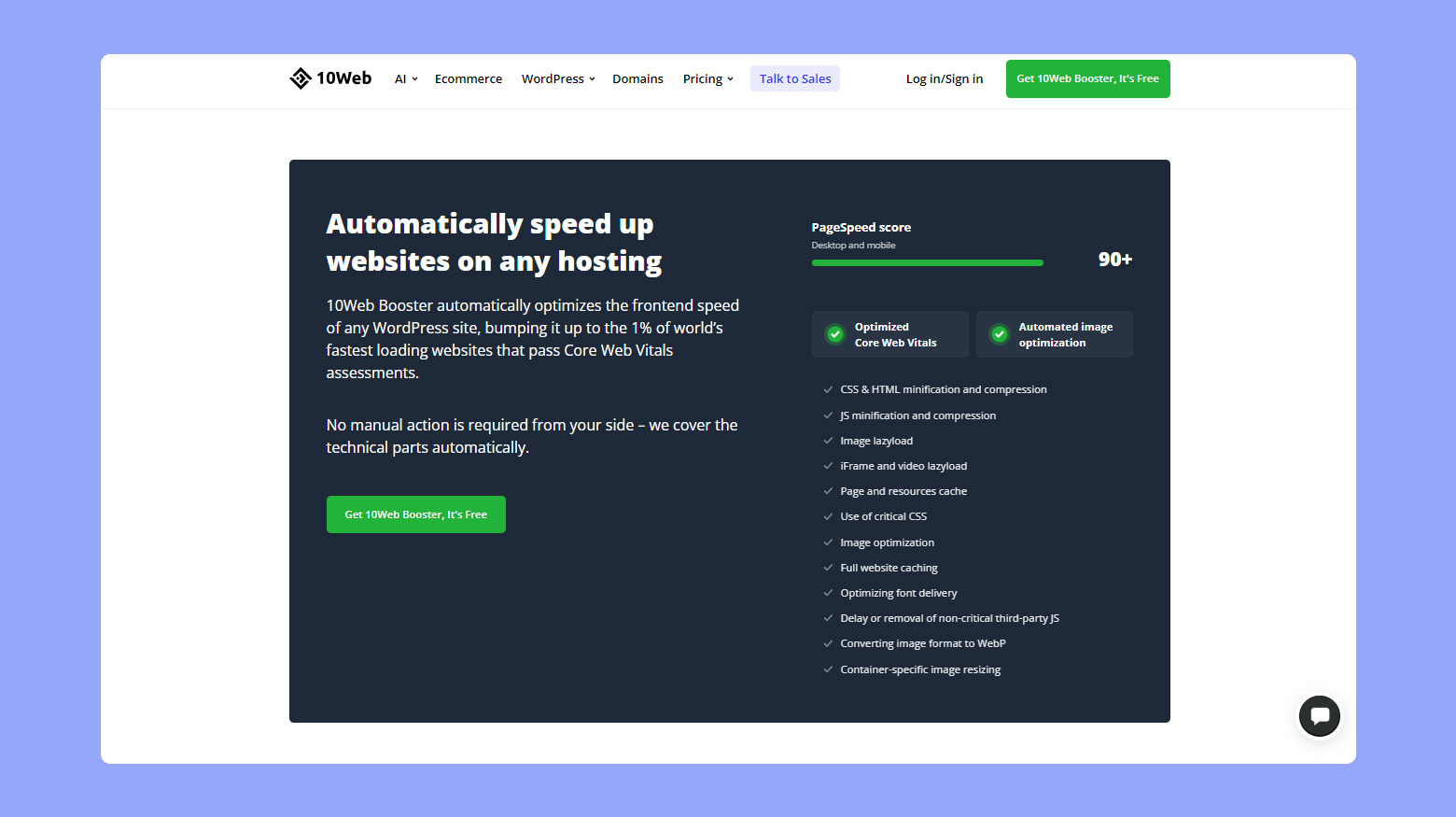
Designing for mobile responsiveness
With more people browsing on smartphones, having a mobile-friendly website is essential. A responsive design ensures that your site looks good and functions well on any device, which is a ranking factor for search engines. Regularly test your site on multiple devices to ensure it’s genuinely responsive.
Ensuring accessibility and readability
Accessible websites tend to rank higher because they provide a good user experience for everyone, including people with disabilities. Use clear fonts, sufficient contrast, and provide alt text for images. Structuring content with headings and bullet points can also help with readability, making information easier to consume.
By focusing on these elements, you’re creating an environment where visitors can interact with your content efficiently and enjoyably, which is beneficial for your SEO efforts on WordPress.
Simplify WordPress with 10Web
Skip and automate manual work with 10Web Managed WordPress Hosting. Optimize your WordPress website effortlessly.
Technical SEO for WordPress
To optimize your WordPress site for search engines, focusing on technical SEO ensures that your site is easily crawlable and securely indexable.
Leveraging XML sitemaps and robots.txt
Your site’s XML sitemap is a roadmap for search engines, listing all crucial URLs to ensure they are found and indexed. Regularly update your sitemap and submit it via Google Search Console and Bing Webmaster Tools to aid faster indexing. Use the robots.txt file to guide search engines on which parts of your site to crawl or ignore, further refining the indexing process.
Utilizing Google Search Console and Bing Webmaster Tools
Google Search Console and Bing Webmaster Tools are essential for monitoring your site’s performance in search results. Verify your site with these tools to track indexes’ status, submit sitemaps, and understand how visitors discover your content. Regularly check for crawl errors and employ provided diagnostics to optimize your site’s technical SEO.
Resolving duplicate content and site security issues
Addressing duplicate content ensures search engines don’t waste resources on similar pages, and it helps in avoiding penalization which can harm your rankings. Use canonical URLs to point search engines to your preferred pages. For site security, implement SSL (Secure Sockets Layer) to create an HTTPS connection, offering a secure browsing experience which also contributes positively to your SEO.
Keep these technical elements in good shape to support better discoverability and security of your WordPress site.
Link building and content promotion
Effectively create content that attracts backlinks and promotes it across various platforms to boost your website’s traffic and SEO standing.
Creating shareable content
Your main goal is to craft content that other websites want to share. Start with research to understand what content in your niche performs well and why. Then, produce high-quality articles, infographics, or videos that address those popular topics with a fresh perspective. Make sure each piece provides clear value, such as actionable tips or unique insights, which encourages sharing and, in turn, earns backlinks.
Developing a backlink strategy
Building backlinks requires a strategic approach. Identify authoritative sites in your niche and reach out to them with a compelling reason to link to your content. Utilize an SEO plugin like All in One SEO to analyze your current backlink profile. Craft personalized emails for outreach, highlighting why your content would be a valuable resource to their audience. Remember, quality trumps quantity in backlinks, so focus on relevance and authority.
Integrating social media to drive traffic
Social media can be a powerful tool for content promotion, directly affecting your site’s traffic. Share your content on platforms like Facebook, Twitter, and LinkedIn to reach a wider audience. Engage with followers through comments and messages to build a community. Use bold and italic text for emphasis, and remember to include internal links within your posts to guide users deeper into your website—not just to the homepage. Lastly, encourage your readers to become subscribers to nurture a long-term relationship.
Advanced features and optimizations
To truly leverage the power of SEO on WordPress, you should take advantage of advanced features and optimizations that can propel your website to new heights.
Accelerated mobile pages (AMP) implementation
AMP is a technology designed to make web pages load faster on mobile devices. Since page speed is a ranking factor, implementing AMP can boost your search visibility significantly. To start, install an AMP plugin on your WordPress site and follow the setup wizard to configure AMP pages for your content.
Structured data and schema markup
Incorporating structured data and schema markup helps search engines understand the content on your pages, allowing them to display rich snippets. This could be done efficiently with plugins, such as Rank Math, that allow you to select a default schema type for your content. For specific content types, use the Schema Markup tab under your SEO plugin settings to fine-tune your structured data.
Optimizing for local SEO and social media signals
Your site should be optimized for local SEO to rank well in location-based searches. Use tools like SEMrush to identify local keywords, and include them in your titles and meta descriptions. Connect your site to social media to enhance social signals, which can indirectly affect SEO rankings. Plugins like WP Rocket can improve your website’s loading time, which is beneficial for both local SEO and social media engagement.
Monitoring performance and making adjustments
To maintain a strong presence on search engine results pages (SERPs), you need to monitor your site’s performance regularly and be willing to make strategic adjustments. This ensures your efforts in search engine optimization SEO yield tangible results over time.
Tracking rankings and organic traffic
You can track your website’s rankings for key search terms in Google and other search engines to measure success. Use tools like Google Analytics to monitor your organic traffic. This data reflects how visible your site is in SERPs and can guide decisions on what to adjust. Regular monitoring helps identify trends and shifts in your website’s performance.
- Track key metrics: Monitor your average position, click-through rate (CTR), impressions, and organic traffic.
- Set up alerts: Configure alerts in your analytics platform to notify you of significant changes in traffic or rankings.
Analyzing competition and adjusting strategy
Understanding your competition is crucial. Perform a competitive analysis to see how your rivals rank for similar keywords and determine what content or tactics are benefiting their SEO.
- Identify competitors’ strengths: Look at the top-performing content of your competitors and analyze why it ranks well.
- Adjust your strategy: Based on your analysis, refine your content strategy to include tactics that are working well for others, such as backlink acquisition or on-page optimization.
Continuous improvement and updating content
Search engines favor fresh and relevant content. By continuously updating your existing content, you can improve its relevancy and potentially boost its ranking.
- Update regularly: Revisit and refresh older posts with new information and keywords.
- Monitor content performance: Keep an eye on how your updates impact traffic and rankings, and tweak your content as necessary.
Remember, SEO is an ongoing process; keep refining your strategies and content to stay relevant in the ever-changing landscape of SERPs.
Simplify WordPress with 10Web
Skip and automate manual work with 10Web Managed WordPress Hosting. Optimize your WordPress website effortlessly.
Additional WordPress SEO considerations
Before diving in, it’s key to understand that optimizing your WordPress site involves more than keywords and content. Let’s look at image optimization, hosting selection, and the importance of consistent updates.
Understanding image optimization and alt text
Images enhance user engagement, but they must be optimized for search engines. Image optimization includes reducing file sizes to improve load times without compromising quality. Tools like Adobe Photoshop or online compressors can assist in this. Moreover, image alt text is crucial because it provides a textual alternative for search engines to understand the image content. Ensure your images’ alt text is descriptive and includes relevant keywords where appropriate.
How to add alt text in WordPress
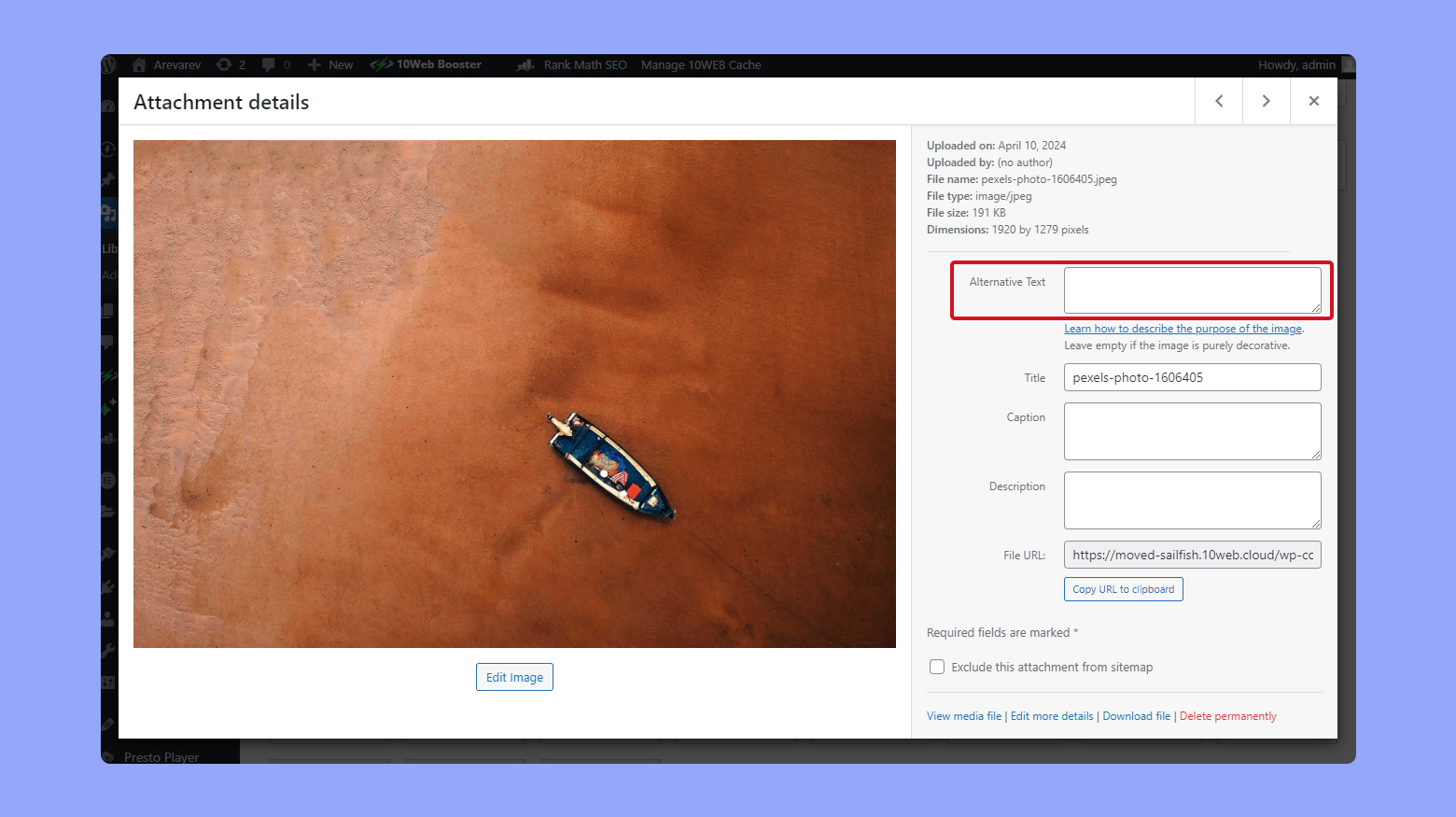
- Go to your Media Library.
- Click on the image to open the Attachment Details.
- Enter a descriptive alt text in the Alt Text field.
Choosing the right hosting provider for speed and reliability
Your hosting provider plays a vital role in SEO, affecting your site’s speed and uptime reliability. Look for a provider that offers dedicated WordPress hosting solutions with robust performance. A hosting provider that includes an SSL certificate ensures secure data transfer, which is also a positive signal for search engines. Here are a few points to consider:
- Uptime guarantee: Aim for 99.95% or higher.
- Server response time: The quicker, the better for SEO.
- Customer support: 24/7 support can help resolve issues promptly.
10Web managed hosting

10Web offers a comprehensive range of AI-driven tools and services that empower users to create, manage, and optimize websites more effectively. From individual bloggers to large enterprises, 10Web provides the technology and support needed to thrive in the digital ecosystem.
Automated Hosting
10Web elevates the hosting experience by utilizing the power of Google Cloud, resulting in the fastest, fully automated hosting solution for WordPress sites. This service guarantees a 99.9% uptime and includes features like elastic scaling to handle varying loads, ensuring that websites remain operational without interruption. Additional features include real-time backups, 1-click migration, and automatic PageSpeed optimization. These features all contribute to an improved SEO on your WordPress website.
PageSpeed Booster
Performance optimization is crucial for maintaining user engagement and search engine ranking. 10Web’s PageSpeed Booster is specifically designed to enhance website performance, ensuring a high PageSpeed score. This improvement in Core Web Vitals translates to faster loading times and a better overall user experience, thus, helping your website rank higher.

AI Website Builder
10Web’s AI Website Builder is a groundbreaking tool that allows you to build or recreate websites using artificial intelligence. This platform not only generates SEO optimized content and images within minutes but also lets you customize your sites using the 10Web editor, which is based on Elementor.
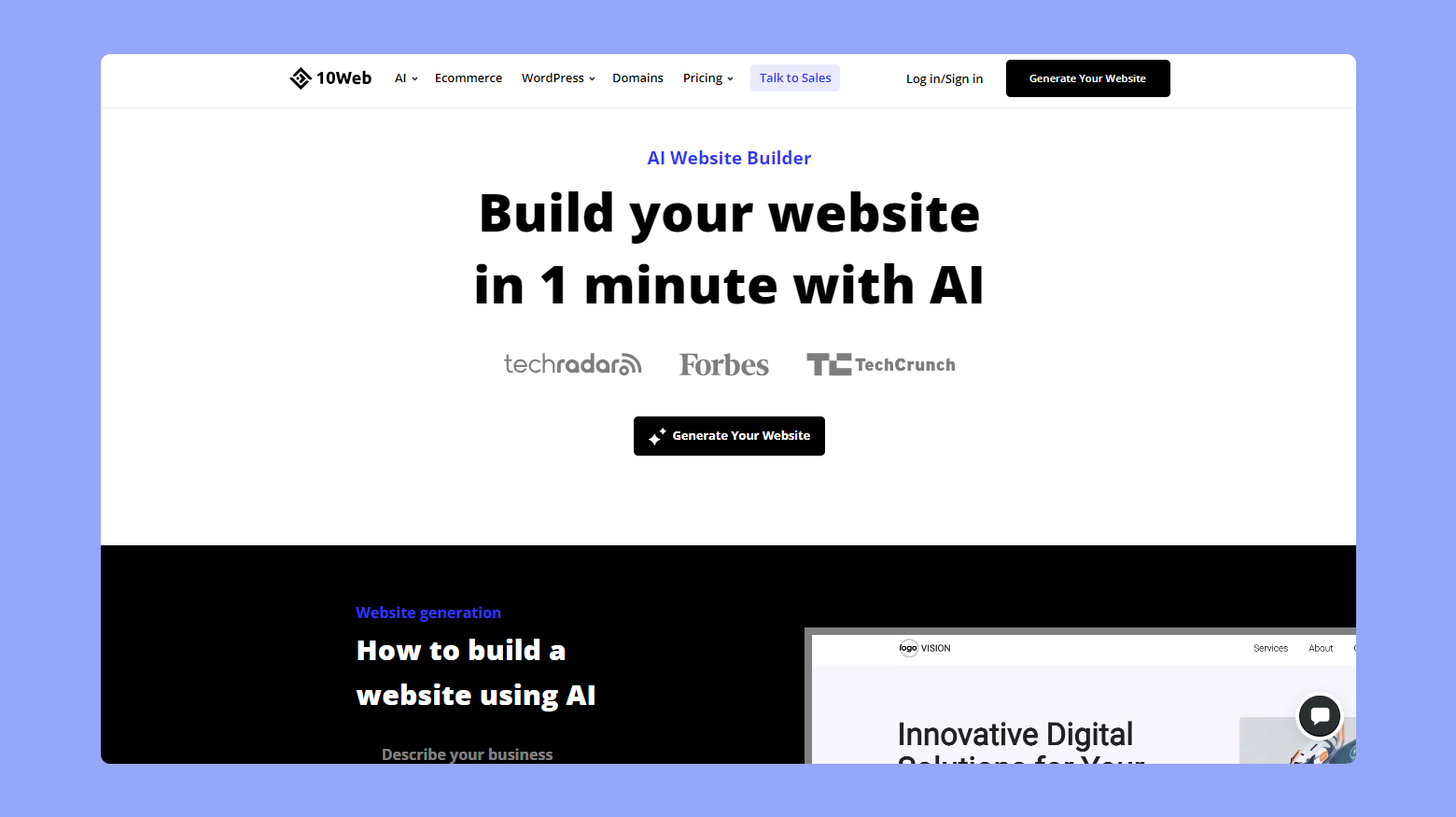
Security and management
The platform offers comprehensive monitoring against security breaches, including malware detection, DDoS protection, and prevention of brute force attacks. The security of your website directly affects your customer trust and your business credibility. Websites that are secure tend to be more trusted by users.
Emphasizing the importance of regular publishing and updates
Search engines favor websites that are regularly updated with fresh content. Make a habit of publishing new blog posts, updating existing content, and refreshing your website regularly. This signals to search engines that your site is current and provides valuable information. Set a consistent publishing schedule and stick to it to keep both your audience and search engines coming back for more.
Tips for consistent publishing
- Plan your content calendar in advance.
- Use Post Scheduling in WordPress to maintain regular updates.
Incorporating these practices into your WordPress SEO efforts can significantly contribute to your site’s overall search engine visibility and performance.
Conclusion
In this article, we’ve detailed how to optimize a WordPress site for better search engine visibility and user engagement. Key takeaways include:
- The importance of using SEO-friendly themes and plugins like Yoast SEO or Rank Math.
- Setting up a logical site structure.
- Implementing effective content strategies with well-researched keywords and regular updates.
- A reliable hosting service with 99% uptime, website optimization services, and security measures.
These measures are crucial because they directly influence how search engines rank pages, affecting a site’s ability to attract more traffic and potential conversions. From the discussion, it’s evident that maintaining an optimal balance between technical SEO and quality content creation is essential for sustaining and improving search engine rankings.


